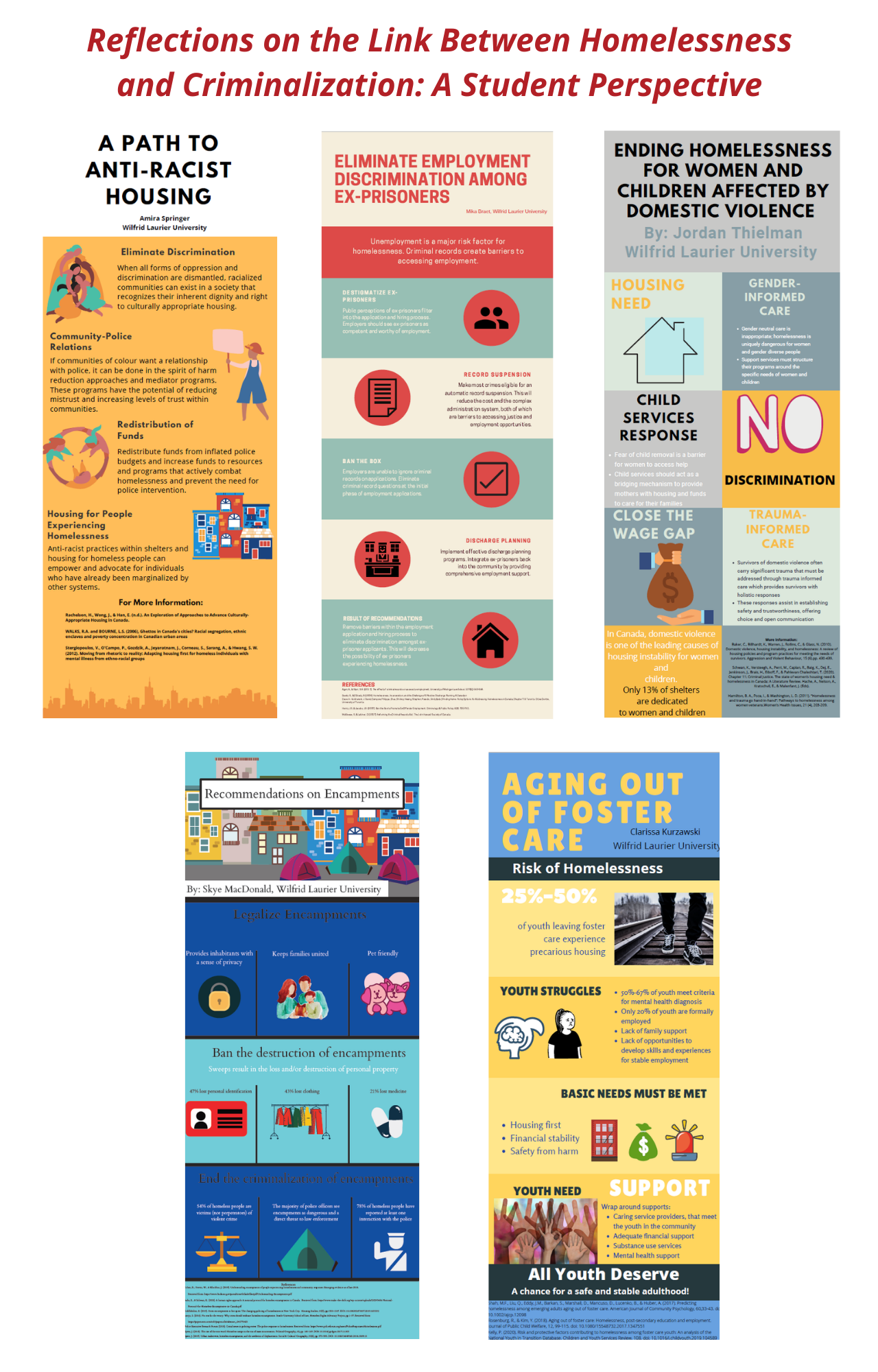In Fall 2020, I had the opportunity to teach a brand new course – Homelessness and the Criminal Justice System in Canada to fourth year criminology students at Wilfrid Laurier University. I’ve been waiting 10 years to teach a course like this, one that explores how the very nature of being homeless becomes criminalized and at the same time, how people who have involvement with the criminal justice system are highly vulnerable to homelessness.
Despite teaching this course online because of the COVID-19 pandemic, it was the most rewarding teaching experience I have had in my career. The students were passionate, curious, and open to new ideas about how we have created and respond to homelessness. We had a chance to re-imagine how we think about homelessness, relying on the Canadian Definition of Homelessness and the Definition of Indigenous Homelessness. We looked at homelessness from an intersectional perspective, concentrating on how certain populations, such as women, the 2SLGBTQ+ community, and racialized people experience unique circumstances that leave them vulnerable to homelessness and criminalization. Each week we dug deep on a specific topic facing people who experience homelessness, like the Safe Streets Act, police interactions with people who are homeless, discharge from correctional facilities into homelessness, encampments, and the impact that criminal records have on housing accessibility. We were honoured to have several guest speakers join the class to provide their insight on the issues, including someone with lived experience of homelessness and criminalization, and representatives from Justice for Children and Youth, John Howard Society of Ottawa, and more.
The students took all of their learnings from the course and as their final assignment developed a blog and action paper to think through structural, policy, and practice implications to make change to improve the lives of people experiencing homelessness, with the ultimate aim of preventing and ending homelessness and its criminalization in Canada. They also produced infographics to share the issue most important to them with a wide audience. I am incredibly proud of this group of students who produced impactful blogs and infographics that get at the heart of the injustice, discrimination, and inequity people experiencing homelessness in Canada face.
A selection of these blogs and infographics will each be featured and published on the Research Matters Blog on the Homeless Hub over the coming weeks! The students’ positions are informed by reliable, verified, and evidence-based research. They present some of the most serious issues facing homelessness today. Topics include:
• An impassioned call to action to dismantle racial discrimination in the homelessness and housing sectors (Amira Springer)
• An outline of how people continue to be punished long after they serve their time because of the stigma around criminal records, including creating a huge barrier to accessing housing (Mika Braet)
• A focus on women who are victims of intimate partner violence and ensuring that their needs are addressed (Jordan Thielman)
• A timely unpacking of the punitive response to encampments and a human rights approach to encampments, especially during the pandemic (Skye MacDonald)
• A highlight of the connection between young people exiting child protection services and a vulnerability to homelessness and criminalization, calling for all youth to have safe and appropriate housing (Clarissa Kurzawksi)

These students and their classmates are the future of the homelessness and related sectors. Some of them already work in the field. As these infographics show, they are well on their way to making the prevention and end to homelessness in Canada a reality.
The analysis and interpretations contained in this blog post are those of the individual contributors and do not necessarily represent the views of the Canadian Observatory on Homelessness.

